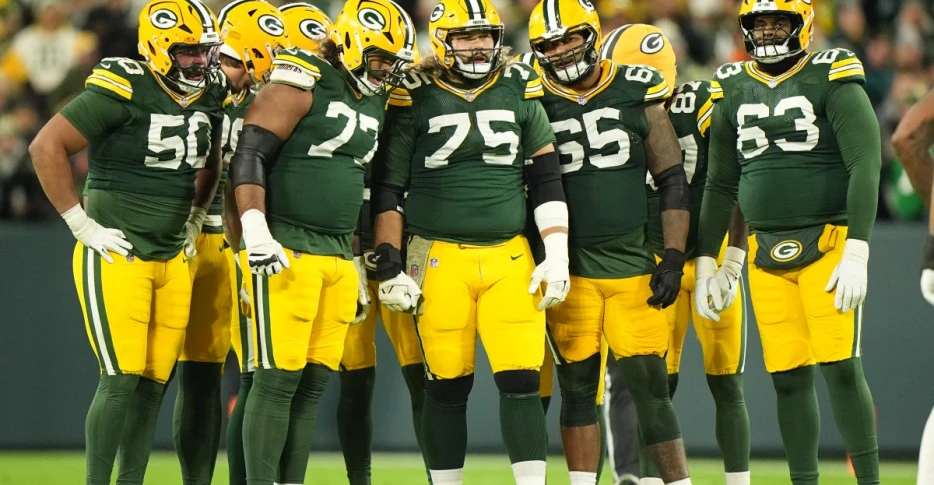
 Acme Packing Company
Acme Packing Company
There’s so much talk about the Green Bay Packers’ offensive line that I just wanted to finally collect all my thoughts together on the team’s recent pivot at the position. As someone who has followed the Packers’ draft trends since the start of the Ted Thompson era —maybe too closely for my own good health —there has been a significant change in how the team approaches the position, reflected in both their drafts and in free agency. Recently, the team has wanted to add weight at the position, likely due to their changing schemes in the run game (more on that later), but what we can all agree on right now is that their run game isn’t working.
Just to paint the picture of the Packers’ run game failures — so we can get it out of the way — running back Josh Jacobs has 608 rushing yards this season, but only 99 of those yards are before contact, according to NFL Pro, the league’s own player-tracking platform. On average, Jacobs is averaging 0.6 yards before contact per carry. 15 quarterbacks, including Green Bay’s Jordan Love, have more yards before contact than Jacobs this season. Backup Arizona Cardinals running back Emari Demercado, who has just 26 carries on the year, has more yards before contact (107) than Jacobs in 2025.
Now that we’ve established a lack of effectiveness on the ground, let’s focus on the offensive line and what has changed recently.
Until the last couple of years, the Packers were known for drafting undersized but high-quality pass-protecting college tackles on Day 3 of the draft. They also didn’t hesitate to move those players to guard or center, either. This method worked because Green Bay’s offensive scheme leaned into the passing game (Mike McCarthy was viewed as innovative for transitioning the West Coast Offense into shotgun at one point in his career; you have to believe me on this) and zone run schemes. This eliminated the need for 320-pound offensive linemen who needed to move 330-pound defensive tackles off the ball for gap scheme runs to work.
The front office’s ability to hammer that market inefficiency is maybe the second-most important reason why the Packers have been so consistent over the last 20-plus years. Number one, obviously, is hitting on starting quarterbacks in the draft and developing those passers.
Pro Football Reference only has Green Bay’s snap counts dating back to the 2012 season, so I can’t go all the way back to the start of the Thompson era in 2005. What I will say, though, is that the Packers never had a significant full-time starter on the offensive line who weighed 320 pounds or more (based on combine and pro day weigh-ins) from 2012-2023. Over that time, the team went a combined 120-73-2, including three straight 13-win seasons to start the Matt LaFleur era.
The type of linemen that Green Bay now adds to the roster is much heavier. Currently,...